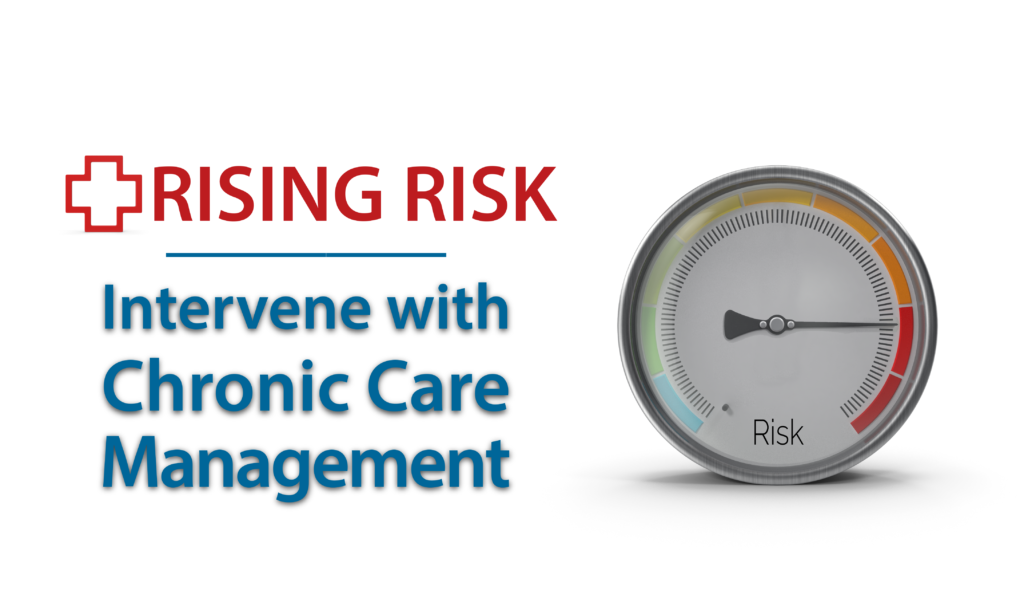A big portion of total healthcare costs is spent on high-risk patients whose conditions have worsened and made them high utilizers of healthcare resources. Naturally, the immediate goal is to reduce this cost and utilize the cost savings to further improve delivery, access, and quality of care. But how is this best accomplished? When should intervention happen that would yield the most cost-effective results?
Studies confirm that making appropriate interventions for rising-risk patients just before they move to a high-risk category has been effective in producing better health outcomes. This is the point of value-based care, which is to treat patients when they are still well and not when they are already very sick.
Recognizing rising risk before it’s too late
The term rising risk is not new in healthcare, but it became more popular during the pandemic when relatively healthy patients became sicker when they deferred care for fear of the virus. It pertains to a patient population with one or more chronic conditions, who are moving in and out of stability and require management of risk factors more than what is stated in their disease. It is a patient category for those who do not yet have high utilization of resources like hospitalizations, ER visits, or care coordination.
However, rising risk as the term suggests is more likely to transition to high utilizers if their chronic condition is left unchecked or unmanaged. The healthcare system has not been able to control spending growth because care focused on that moment in time that the patient sought medical attention.
But chronic conditions are different from other diseases. It is uneventful for a time and does not call for intervention until the patient is in the ED with acute symptoms and getting the most expensive care available. Even for those focused on social determinants of health (SDoH) or altering unhealthy behavior, rising risk if not closely monitored will surely become high risk. Every year, about 18% to 20% of rising-risk patients progress to high risk with only a few managing to move a step back.
Chronic disease can only be managed with a prolonged engagement longitudinally. This slows disease progression, prevents acute episodes, and may even halt the onset of additional chronic disease. Studies support that focusing care on rising-risk patients may have a better impact on health outcomes. These patients are still well enough to self-manage their care and effect the necessary lifestyle or behavioral changes.
Rising risk is the patient population best suited for a comprehensive care management program that can offer high-touch care and effectively engage patients.
Intervene with Chronic Care Management
Medicare’s Chronic Care Management (CCM) program provides the most effective digital solution to monitor and manage rising-risk patients, particularly those with two or more chronic conditions, which is a requirement for eligibility by the Center for Medicare and Medicaid Services (CMS).
CCM is able to cast a wider net to capture those patients more likely to be at high risk. Using a care management program like CCM can reduce one-third of rising risk escalation rates.
As a virtual care service, it can expand its reach and provide greater access, particularly for patients who are having difficulties getting to the doctor’s office. CCM can make timely interventions in caring for rising-risk patients through the following:
1. Multiple touchpoints in-between appointments.
This ensures compliance to care plans, adherence to medications, keeping appointments with other providers, undergoing preventative screenings, and following other crucial elements of the care instructions. It also provides opportunities for patients not to overlook the many issues that may lead to preventable hospitalization or readmission.
2. Engages patients longitudinally.
With the help of the care team, educating patients is done in the proper context to affect the right behavioral changes. Moreover, the extra layer of engagement provides valuable insights to the care team and the physician. Although the EMR and data analytics provide vital information, they are only supplements to provide the clinician with a comprehensive understanding of the patient including their goals and the challenges they are facing in their care journey.
3. Personalized care that works.
Personalized interventions provide an actionable framework to identify SDoH, unhealthy behaviors, systemic barriers, or what has transpired with an outside provider. Only by establishing a meaningful relationship with patients, can clinicians fully make timely interventions to the patients’ rising risk trajectory.
4. Leverages virtual care solutions.
Through the use of telehealth technology, CCM can cater to more patients while scaling down the utilization of resources.
5. Harnesses a team-based approach.
The solution significantly improves the quality of care by shifting the burden from the physician to the members of the care team.
CCM as a value-based care program holds the key to addressing urgent concerns on rising risk to further curtail increasing healthcare spending on patients with chronic conditions.
Prevention is better than a cure.
The key to effective prevention is not only in knowing when to provide the needed intervention but also in how long it should be. A longitudinal care management service will have a positive impact on the patient’s health. For many chronic care patients, the journey is often a one-way street where you can no longer return to your starting point. Hence, the care is focused more on prevention by keeping the patient as healthy as possible and out of the hospital. This is best accomplished through the concerted effort of the patient, providers, and the care team as a whole.
Furthermore, CCM is a billable Medicare service with several CPT codes for providers to use and get paid for their non-face-to-face services. However, for CCM to work, there should be a clinical team to assist the physician, which means additional staffing. There are also other costs in setting up the program, which can be challenging and expensive. Providers are opting out because of the substantial cost involved. In doing so, they are missing out on providing the best care to their patients.
A partner to provide the service on behalf of the practice.
The answer is by outsourcing CCM to a credible third-party provider like Ascent Care Partners (ACP).
ACP offers turnkey CCM solutions that are best complemented by Remote Patient Monitoring (RPM) which captures patient data in real time. CCM and RPM provide wraparound care that catches and interprets trends to better manage your rising-risk patients. We can help you with patient enrollment, preparation of billing charges, and in scaling up.



